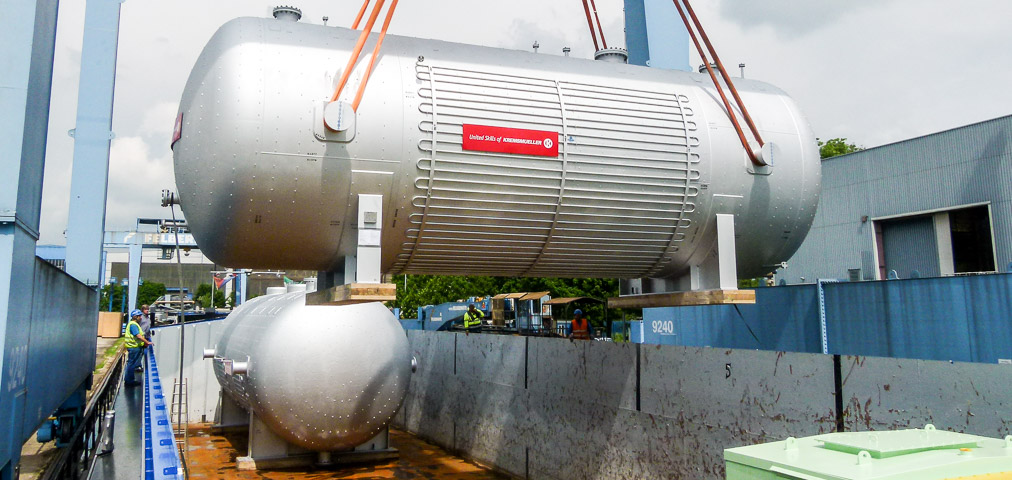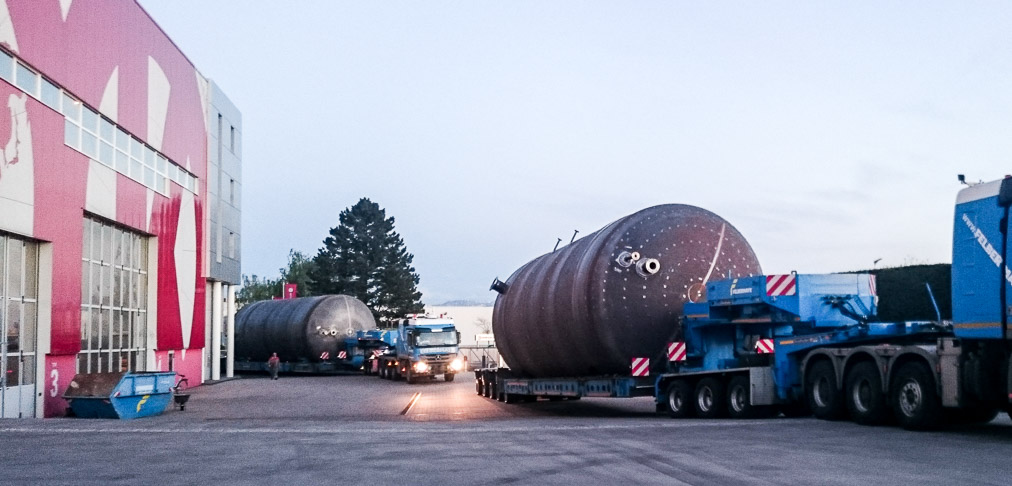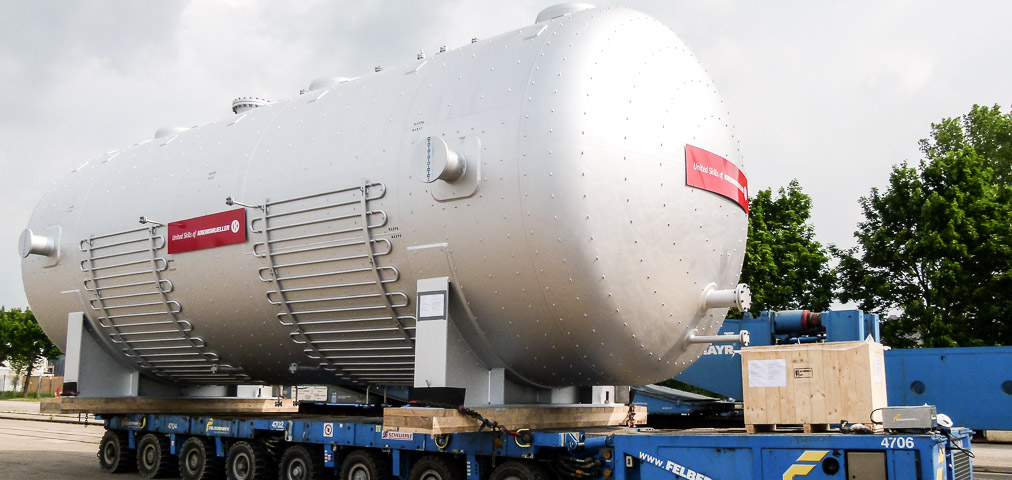Sour Gas Tank for Belarus
After the successful delivery of two sour gas tanks, a new follow-up order was promptly received from the Belarusian refinery JSC Mozyr.
Not many plant engineers can manufacture in dimensions like these, one of the reasons that spoke in favour of Kremsmüller for this contract. The diameter of over five meters (5050 mm) was in fact the decisive factor in this project.
Road transport from Steinhaus to Mozyr (Belarus) was unthinkable as no transportation corridor could be found on the road for such dimensions. For this reason, the two separators were prefabricated to 90 percent in Steinhaus and then transported to Linz by truck equipped with a vessel bed. The tank was then completed directly in the port of Linz on the Danube from where it was transported by inland and ocean-going vessel to Estonia, and from there overland directly to its destination in Belarus.
The tanks were made of sour-gas-resistant carbon steel and fitted with heating coils on the outside to prevent them from freezing in winter. The separators are designed to remove liquids (condensate) from humid air/gas and withstand temperatures in excess of 400 degrees. The second tank is intended as a reserve in the event of an emergency or damage.
Since the customer was more than satisfied with the result, Kremsmüller was commissioned with a third tank of this type, which is currently under construction following exactly the same procedure as the first two.
Road transport from Steinhaus to Mozyr (Belarus) was unthinkable as no transportation corridor could be found on the road for such dimensions. For this reason, the two separators were prefabricated to 90 percent in Steinhaus and then transported to Linz by truck equipped with a vessel bed. The tank was then completed directly in the port of Linz on the Danube from where it was transported by inland and ocean-going vessel to Estonia, and from there overland directly to its destination in Belarus.
The tanks were made of sour-gas-resistant carbon steel and fitted with heating coils on the outside to prevent them from freezing in winter. The separators are designed to remove liquids (condensate) from humid air/gas and withstand temperatures in excess of 400 degrees. The second tank is intended as a reserve in the event of an emergency or damage.
Since the customer was more than satisfied with the result, Kremsmüller was commissioned with a third tank of this type, which is currently under construction following exactly the same procedure as the first two.


